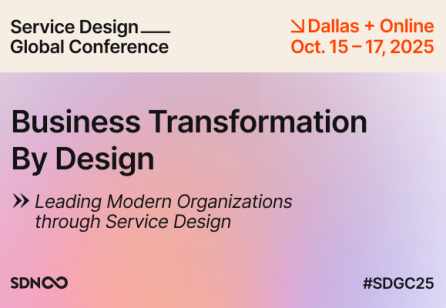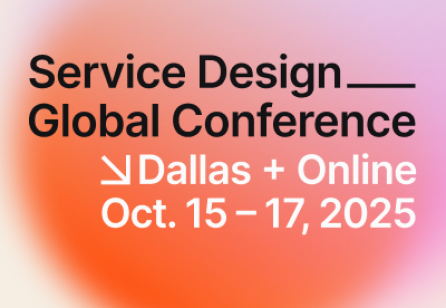Automated transcript
## Introduction to Estelle Poscio
today we have a great guest for you. We have Estelle Poscio, and let me first introduce you to her.
Estelle Poscio is a mom opera singer, classical singing teacher and personal coach.
Today, Estelle, supports individuals through personalized coaching programs to explore how you can work with your emotions in your personal and professional life.
Estelle created the emotional metro for this, a set of four compact and practical maps of emotions. Before being a personal coach and singing teacher, Estelle was a recognized opera singer who performed all over Europe, and we are very excited to have her for the first session of this week. Because this will be a bit of a different session, more creative, more practical.
It we will speak about emotions, but not just speak about emotions. We will also work with our emotions and I'm super excited to have Estelle also with us on the stage right now. First of all, Estelle a big thank you. And welcome.
## Estelle's Journey with Emotions
Hi everybody. Yes, thank you for. So yes, I'm singing opera. I'm a mom of two boys and I'm a coach for emotion and relationship.
So emotion is something difficult for all the people? I think so. I also used to have some difficulties with my emotion, but in my two jobs, so opera singer and mom. I have to be really comfortable with my emotion and I have to deal with my emotion really quickly and really deeply on the stage.
You cannot be unstable. Emotionally unstable. You have to be really calm and peaceful and through a day with two children. Although with one children, with one child, you have also to be really calm and peaceful to help the child to deal and go through his emotion. So I try a lot of different method.
I try nonviolent communication. I try the RESP method is a method with the. You have to go through the emotion with a briefing in and out. I pray. I pray, God, I, I scream into the forest. I also try to sing the intensity of my emotion, of my anger, of my rage. But in all these method, it was missing for me two big important things.
The first things were was the deeply understanding of myself, why I'm so in love with this person, and why I switch in aggressivity and some time in violence. I needed really to understand myself deeply. That was the first thing. And the second thing that was missing in all this kind of method was the thing that I, when I apply it works And in all this method, sometime it works and sometime it doesn't work or it work.
It works two times and one time it doesn't work.
## The Creation of the Emotional Metro
So I create the emotional metro.
I show you the first card of the emotional metro. The two goals is deeply understanding of myself and of the other people. And the second when I apply it works. So first I create three group. Emotion. The first one is the love emotion. The second one is the aggressivity aggressive emotion. And the third group was the violence emotion.
And then, the second thing, I put all this in motion into 15 boxes five boxes for the love group, five boxes for the aggressive group, and five boxes for the violence group.
It's,
and third, I create connection between the third group. I create connection between the five boxes of loss, between the five boxes of aggressivity and between the five boxes of violence. You see here the connection five you see here the connection between the boxes and it became five metro line.
And at this point, the surprise for me is that the children know it already. The children are used to travel on this metro line. The children have the appropriate reflex to use the emotional metro, and they. They are really quick and. To deal with the emotional metro. That was a big surprise for me because I create the emotional metro from, for my opera jobs and for my mom job.
So to help my children to go through this emotion through the day. So that was a big surprise, and I understand that the emotional metro is not for my children. Is not for the children into the world. The emotional metro is for the person who take care of the children. So you, the adult, the parents, the teacher perhaps you have children, perhaps not, but I think you are in a relation with sometime with children.
Is for you, the people who take care of children because you have now to understand this this method and it is now your responsibility not to destroy this system. Because when I was a child, my parents destroy my intuitive ability to use the emotional metro. But when my parents was. Children, their parents destroy this intuitive ability to travel on Metro Line.
So now we have to stop that and the adult have to learn to re relearn, to learn again as something that you already know as child. Today we'll travel on this metro line and I'll learn you. I'll relearn you three gesture who come. That's the children already use in through the day and you have to relearn it. Are you ready? I think you're ready.
## Practical Gestures for Managing Emotions
I don't know, as of the first gesture who come is for anger. Anger is when you wanted to say, I hate you, is when you wanted to fuck somebody or to fuck ins.
So little. Just a little. Fuck Somebody hate the people in secrets. So we'll learn a gesture who come when you are, when you feel anger in the day. So you use the hand, you put your hand here, section on the stomach,
you go up. And then you go down in the earth, it's really intense. The anger is an intense emotion. It can be just anger. No, it's anger. So you have to go really intense. We will put this emotion out of your body and go through the earth. You will express your anger on somebody. So I try again.
I show you again up and down and it's in one gesture.
And you can I'll say in French, but you can say,
You can say the words that come you through your mouth when you are in anger. So just try it. And the anger is intense. Dance. Don't be afraid to go to in the intensity of the emotion. In opera we always go in the intensity of the emotion. I think the people are afraid of the intensity of the emotion because they don't have the, this gesture who come.
But now you are to learn again. Gesture so you can go and you have to go into the intensity of the emotion sometimes. Perhaps you'll cry when you do that. So just try it.
I not already have a lot of anger today. It's okay for me. Wow. That's the first gesture. You can make it with a a child. When the child are really upset, you just go behind the child. You take the hand and you go down. Up, down. So I hope you are now a little more calm and peaceful.
Just feel inside you. Perhaps you are thinking I'm not upset. I think everybody has a little or a lot of anger inside his body, so just try the gesture. The second gesture is when you are really sad. You think that life is really hard. And it's not just a little sadness, it's when your life is hard for month for your and is always really hard.
So you are perhaps a little depressed or so, and you could make this gesture who come. So we'll make the A tower. So you just make some, like in Paris. So you are really not so really straight your arm and we'll breathe in through the nose so the arm gets a little higher and we will breathe out through the nose.
And you have to put out this sadness the, when you are a little ah, depressed, dec cremate, depressed, this, all these big sadness go inside and the sadness or off go here. So I wanted that you put all this sadness out in the sky. So try make the AFL tower not or really straight, and then breathe in.
And then breathe out. Breathe in, breathe out. The sadness when it's a really big sadness. When you think life is shit, or life is hard. It can be hard in the family, it can be hard in the work, it can be hard. Perhaps you are sick. I don't know. It's really it's an intense sadness.
So go intense in the,
okay. C for myself is if I have sadness. Sadness today,
a little. I,
okay, now it's for me, it's already good. I. And I'm peaceful. How are you? Are you fine? Okay. I think you are fine.
So I have a third who. Calm. That's the pre the, I think the favorite gesture of the child is to make a hug so you can make a hug to somebody else. But now I will learn, you relearn you to make a hug to yourself. So just take you in the, in your harm. And that is always a gesture who come.
So learn again to make a hug to yourself. It is like an heart opening hug. I take myself in my arm and I let my heart opening. That's really good for frustration. So children has lots of frustration in the day. I think adults also have, but they don't express. You just put your frustration into your body.
And now I wanted that you just how in French is dis just dissolve? I don't know to. Dis self. This all the frustration you have into your life. Let's say that all the frustration you have in your body just to take all this frustrat frustration in your arm, and you just use the breath
to put that out of your body. Frustration, make the hearts. And then you have to open again. So just try. You make a heart opening hug, you take yourself in your arm and you just breathe and then you will feel inside. You just, the breathe will change. And when the breathe change is changing, that show that the frustration get out.
Get out of your body. So just be silent. I will make that I will make that with myself. And so how much frustration I have in my body today.
I have a little, I have a little frustration for my. So not for my children, not for my family, not for my work,
but for the person I love.
So I just put this frustration out of my body so I can really have better thinking. Silent in my head.
So when you have more silent in your head, you can better work in your business.
So for me, my brief has changed. I'm, I am. I think I put all my frustration out of my body. So now, three tests who come. The first is the intensity of the anger. The second is the intensity of sadness, and the third is the intensity of frustration.
I hope you are now more calm and peaceful.
Absolutely. We are. Thank you so much. I really appreciate it.
## Q&A Session
I will let to, to people time to put their questions in the chat and we'll take three of them. But before we do that, I want to just to give a bit of a summary of a few things that I take, which are quite strong. I, for me, there is an element of.
I see what you observe with kids. Like I see my kids in these gestures, like the this, I see my kids so much. So that's quite interesting. And there is something quite interesting how I. These gestures, which are very natural, we unlearn them. And now it's very hard, at least for me, some of these gestures, I'm like, oh God, this is, this feels terrible.
Doing this in the middle of my flat. So that's also quite interesting. It tells something about, about like how we feel with our own body and how we feel about expressing emotions. So that's been quite interesting. And just one last
Yeah. But imagine do that in the streets when you are.
Okay.
Absolutely. And I just wanted to point that out for our friends who are more into service design practices. How much this could be also used, when in preparation for a workshop, before a workshop, you're working with very difficult stakeholders, and they're pissing you off.
These are calming gestures or you can get the stuff out. I think that's super inspiring. But let's go with the questions. As we have a few questions here. We have Selena who is sharing thanks for the interesting talk. For me, it seems like that those exhausts are more for doing it by yourself, letting the emotions out of your body.
My question is, in some cases it's really good to speak afterwards about emotion also with a person you are maybe angry with. Do you also look at that and how dealing with language in your concepts.
So how does
the speaking part go with the gesture part?
Really good question. In my co coaching with the people, I see that if you could do the job already by yourself.
And then you are really in peace with you, with yourself. You can go and go to speak with the person who you have this angry, but when you don't do the work really deep, then when you speak with this body, there is already an note of emotion and then you don't speak really good. So with my experience with people, I see that it's better to do already all the job with yourself. It's more efficient. So that's the, that's why I really create four cards. I saw you just two, and then you have to go to the three steps and then to the four. And for that, you don't need. The person.
It's already more efficient, but you, I think it's the past way to go through the relationship was to discuss, that's the non nonviolent communication, imago and all that kind of method. This method is more efficient because you can do all the job yourself. I hope I answered the question, Daniel.
Absolutely. And maybe there is a value in kind of doing the preparation work, the physical work also with the gestures and stuff before being able to have a conversation. Definitely. I'd love to go with the next question as we are in a lightning talk. Let's go with the next one.
We have a lely joining us from Iran, by the way who is saying, I'm curious about what are some unexpected insights or reactions you have seen when other use these ways of coping with emotions? Have you adapted the emotional metro for different auditors or contexts? Like in a group. So I think there's two questions in the question.
One is really how has it changed based on you seeing how others use it? And could that be used in a group?
I observe the children and the children are really clear and all the children do the same gesture and it work with the children. So I. I really tried to found a univer universal gesture.
So NI when the gesture that I found it's, I apply, it works and there is not really other reaction when I was I think that's the, when I make my observation on adult perhaps, but I don't do that. I am, I observe children and all the children react the same in the same way.
Yeah. For from our conversation we had backstage, there was one unexpected learning that I remember from you that was. You thinking, oh, it's the children that don't know how to handle emotions, and then you discovered no, they know they have the gestures, they have the things, and we forgot as adults.
And so maybe there is more value in helping the adults know also how to work with the,
I think the great thing is that I try to do the emotional mentor for children and then it's now for.
Perhaps all kind of method doesn't work because the therapist observe the adults, and I don't observe the adults because the the great the adult command cash, they hide the re reaction, the reaction. They are hiding.
Absolutely. And I will unh the last question, which is do you have some interesting books that we can read on the topic?
I'm really interested in knowing more, so maybe mention one or just two books as we are already. Quite on time, so that will be lovely if you have a book that has inspired you.
I have, because it's something new. You can read all the book on emotion that are make for that, but that's new.
You you have to come on the coaching and then I have a but I don't. I write a book and I write, it's you. You will don't find that in the books.
So Juliana has to write the that book with you? Yes.
That's beautiful.
## Closing Remarks
Before we leave, I just wanted to show a few other comments that I think are sharing also a few insights. Teresa are saying that this could also be used in work context, for example, in preparing teams before doing some hard work. That's quite a beautiful way also, and, i've seen a lot of people saying stuff like this that we see sorry, I can't pronounce the name, but, people saying from recreate, thank you for the effective and easy way to remember how to cope with emotions. And really that will be my last word. Estelle, thank you so much. This has been the first lightning talk form this week.
Thanks so much Estelle for your time, your insights that you shared with us, three insights. You answered three questions and all of that in 30 minutes. A round of applause for you in the chat.
And I wish you all a lovely rest of the day and to you Estelle, thank you again for this.
Thank you. Very thank.
This transcript was generated automatically using Descript. It wasn't reviewed and therefore contains some creative sentences and mistakes.








Share your thoughts
0 RepliesPlease login to comment